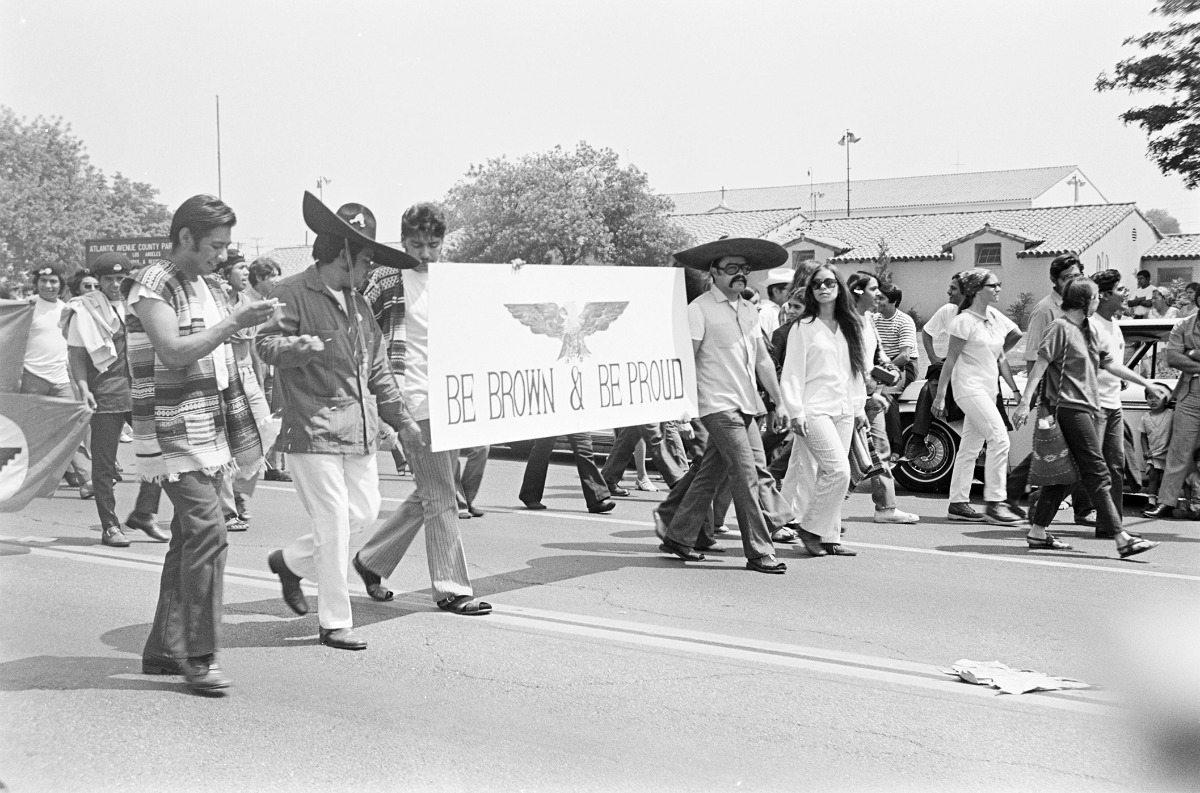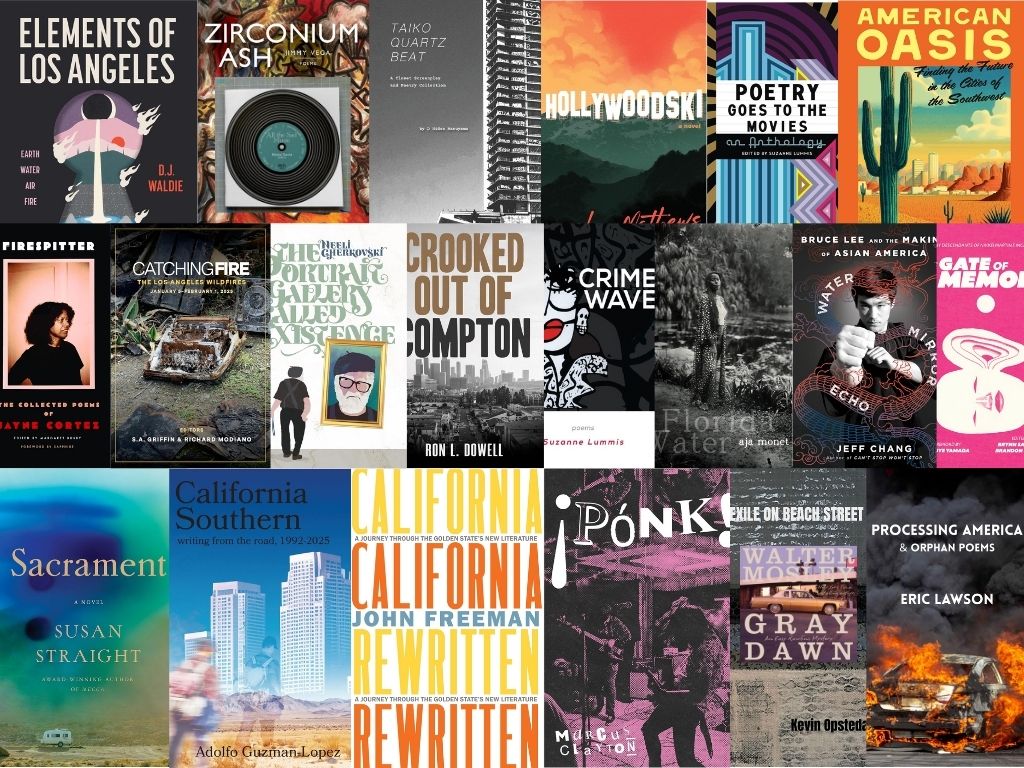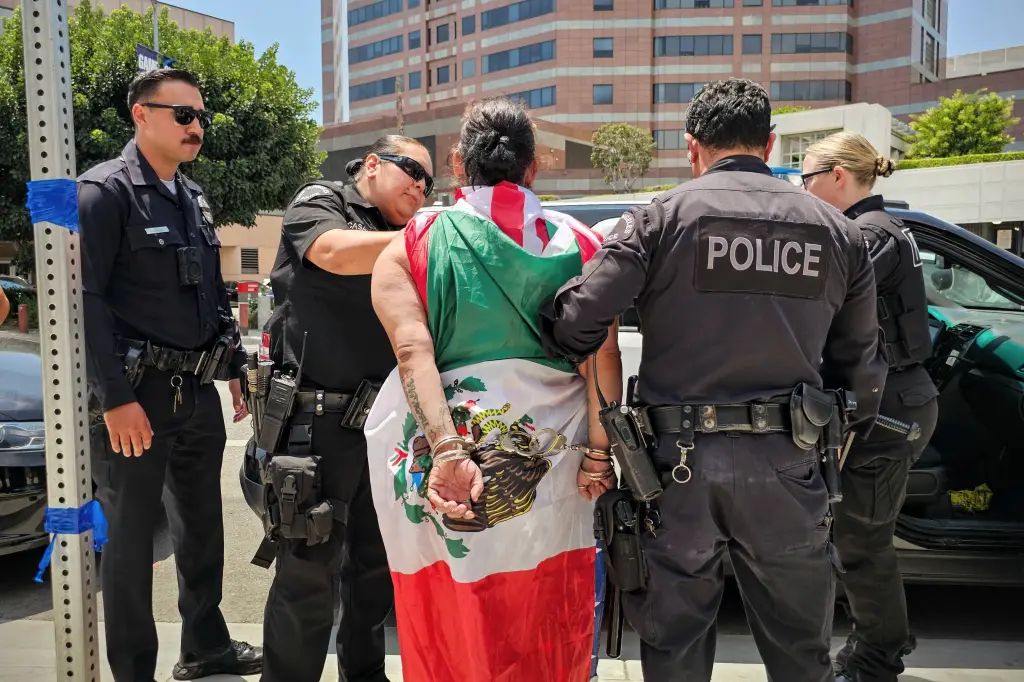[dropcap size=big]T[/dropcap]he Chicano Civil Rights movement was a time of tumult, as it was for many marginalized groups that fought for basic human dignities in the courts, in their communities, in their schools, and in the streets. If you’re like me you’ve heard about the Chicano Civil Rights movement in passing. You’ve heard about journalist Ruben Salazar’s death by tear gas canister, you’ve heard about the East LA 13, and you know that La Raza was a newspaper for the politically active and militant Chicano rights activist — or it’s entirely possible that you have no idea what any of that is. KCET’s documentary on the legacy of La Raza is a look at the lives of the activists who ran the publication, as well as the tactics they used to be seen and heard — most notably their use of photography and political satire as a means to inspire outrage, pride and action.
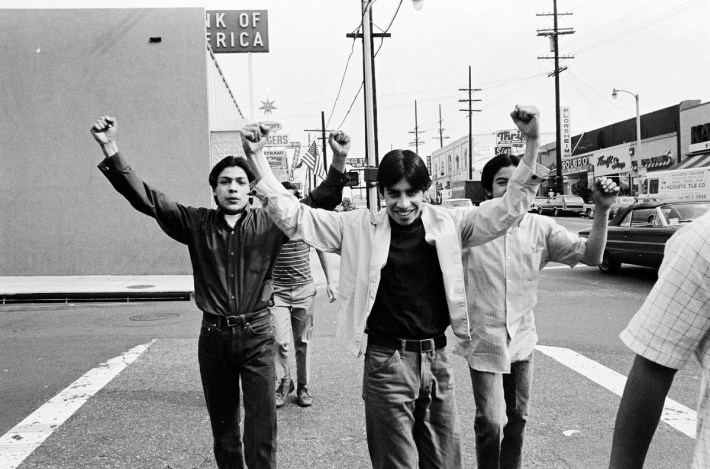
All photos from the La Raza photograph collection, courtesy of UCLA Chicano Studies Research Center.
It’s easy to forget how difficult it was to organize large masses of people in a time with no internet or cell phones. My father — who grew up in Echo Park, who walked out of Belmont High School when he was 16 — recalls the madness of thousands of students gathered in one place — just waiting. He remembers the upperclassmen urging the younger ones to leave their classrooms and hit the street. He also recalls the police showing up, shouting and pushing everyone back onto campus. “It was really disorganized,” he said a matter of factly “it’s not like now where you can just get information instantly.” La Raza helped mobilize ordinary people and together they were able to accomplish extraordinary things.
Watch the Full Episode Here:
They organized 10,000 students in protest of the school system that was teaching racism, classism, and systematic exclusion. The 13 core leaders fought prison sentences for disturbing the peace and disturbing the educational process for which the LA court was seeking 45-year full consecutive sentences — the cases were dismissed for being wildly unconstitutional. When leader and teacher Sal Castro was taken out of the classroom for his involvement in the walkouts, protesters slept-in at the school board for weeks and Castro was eventually reinstated. They mobilized parents and empowered them to demand more from the administration and from teachers. And perhaps most notoriously they brought together 20,000 people to peacefully protest the overrepresentation of Chicanos coming home from Vietnam in body bags. Chicanos were 10 percent of the population of soldiers in combat yet they made up a staggering 19.4 percent of the casualties. But ultimately, their movement was squashed by the LAPD and the FBI who raided, recorded, followed and harrassed the core leadership and anyone they deemed dangerous. The last stand resulted in the death of one Jewish-American protester who was killed by an LAPD shotgun blast.
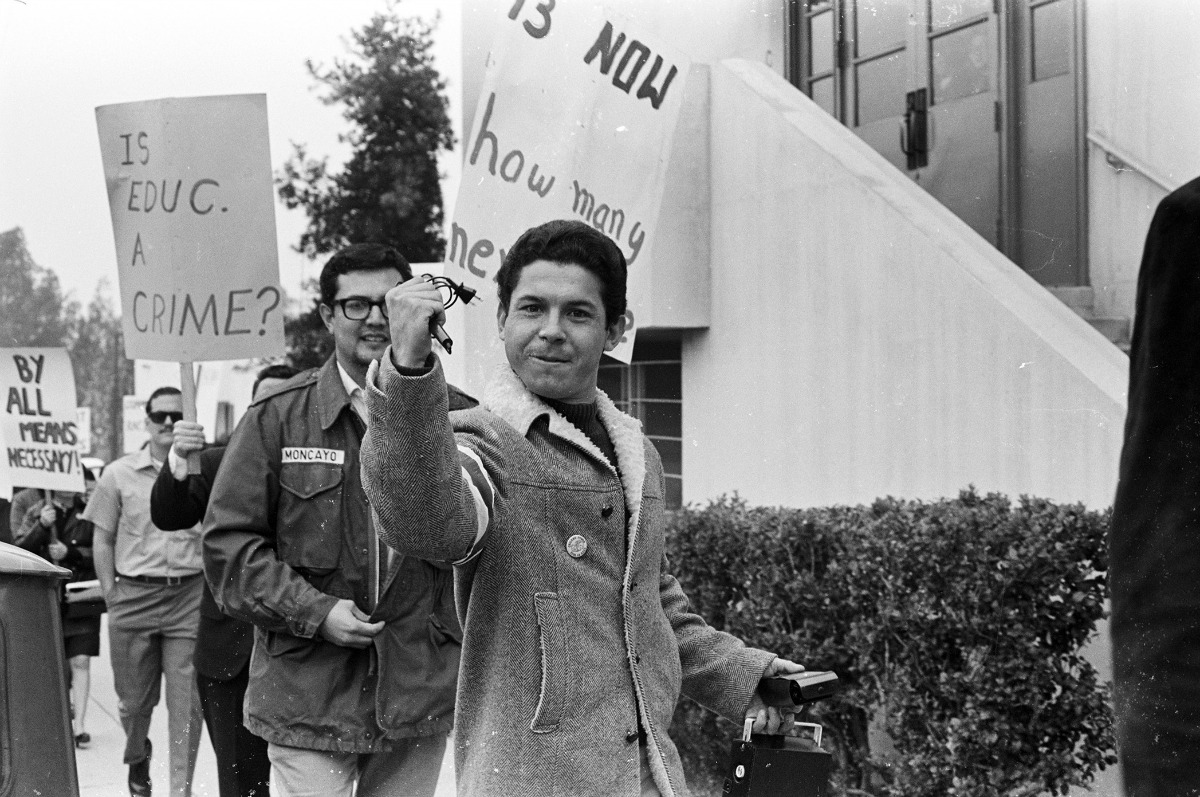
The historical achievements of La Raza really lie in the imagery that empowered a generation and created an enduring sense of identity counter to the one painted by the media and the US government. Unfortunately much of “La Causa’s” achievements were either forgotten or written out of history entirely. Mexican American identity has been hijacked and once again we’re looking to re-define ourselves within the context of a country that still treats us like we don’t belong. But the documentary shows the viewer the desire for identity and belonging have been a part of the Mexican American narrative since Mexico lost a huge portion of its territory (Arizona, California, Colorado, Nevada, New Mexico, Utah and Wyoming) to the US in 1848 when the Treaty of Guadalupe Hidalgo was signed ending the Mexican-American War. The Mexicans who suddenly found themselves in a new country altogether could choose to leave or stay and become Americans but their treatment, just like today, was of second class citizenship. Since 1848 there have been several egregious wide spread actions taken against Mexican Americans. There have been thousands of recorded accounts of Mexicans being lynched in the South West but also as far as Wyoming and Nebraska. The last recorded Mexican lynching was in 1928. In 1855, the California State Legislature determined that school boards could not use public funds to educate non-white students so in 1864, non-white students were put into poorly funded, broken down segregated schools. The Mexican Repatriation began in the 1930s in response to the scarcity of jobs after the Great Depression. Over 1 million individuals of Mexican descent were forced to leave their homes and go to Mexico and it is estimated that 60 percent were American citizens. Attorney General William Dill instituted a program of deportation under the pretext of creating jobs for Americans. They tried to push people of Mexican descent out by cutting welfare for poor families, deportation raids, and door-to-door recruitment. Sound familiar?
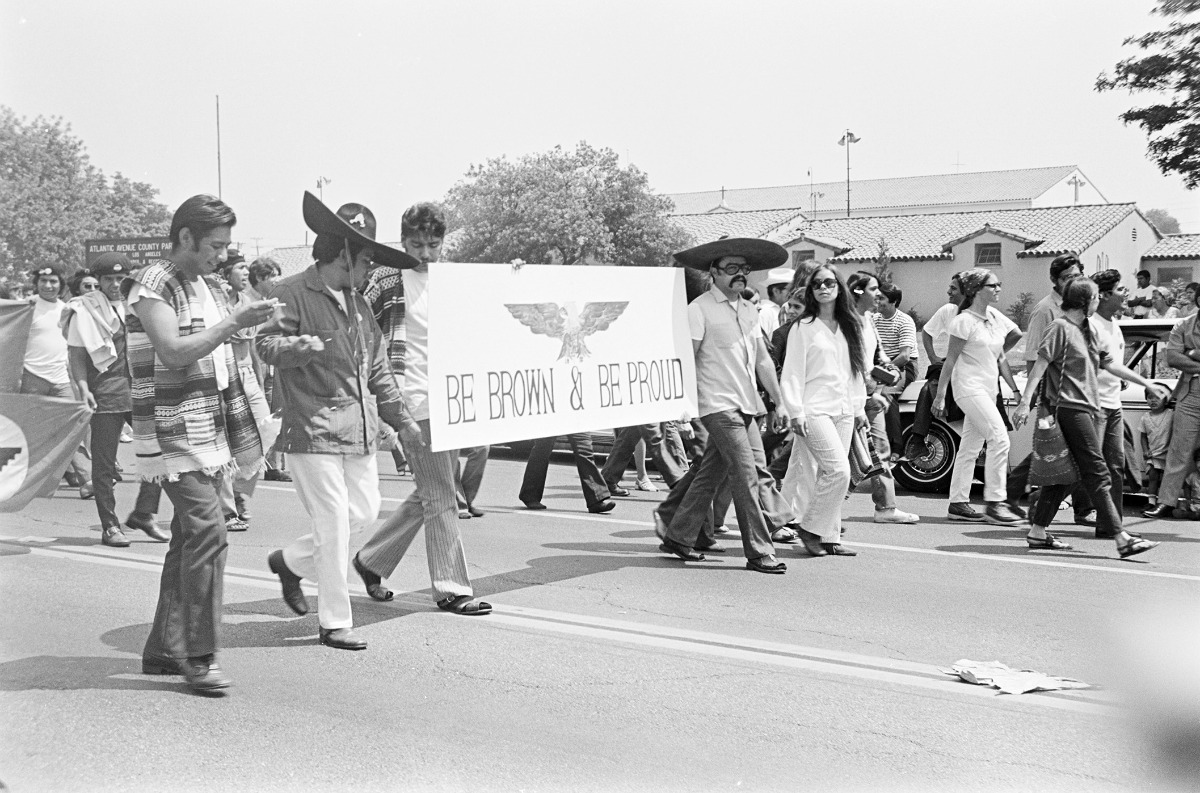
This documentary comes at a time when as a country we’re living the resurgence of all of the same issues Chicanos were fighting for and against, ie. better schools, positive representation, protection from police violence, fair treatment in court, anti-racism, and the right to prosper. I could write about what happened in 1968 in the present tense and it wouldn’t sound surprising or out of step with the direction we’re going in as a nation. With the passing of the March 14th student walkouts, a mere 13 days after the 50th anniversary of the Chicano student walkouts it’s clear that the students of color and people of color are still pushed into the margins to make way for a softer less “scary” face of change — white children. We see that still, within the movement that begs for a child’s right not to be gunned down, there are the same systemic inequalities. We’re still faced with segregation caused by district lines and Gerrymandering that continue to affect school quality and resources available to non-White children. Again Latinos are being pushed out via gentrification and are becoming victims of the rise in police presence and the abuse caused by outsiders uneasy in a brown space. And not too long ago the Bush administration was accused of “poverty drafting” or making enlisting look like a positive career choice in order to send more Latino’s and marginalized people to the front lines. In 2003, more than 37,000 non-citizens (mostly Latino) were enlisted in the US armed forces.

While it’s great to see a visual history of Mexican Americans fighting for civil rights, we can’t talk about this in the past tense. It’s still happening, we’re still fighting. And as we witness the cyclical nature history tends to take on when its transgressions have yet to be reckoned with, it’s easy to see what has changed and what remains the same. That’s what makes this documentary so important, it gives us perspective. It also provides an alternate American civil rights narrative told by the people who lived it.
You can tune into KCET’s LA RAZA episode on Artbound, Tuesday April 3rd at 9:00 pm on KCET-HD. It will also replay several times throughout the month. Watch a preview here.
